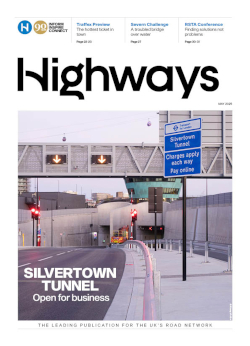The Department for Transport (DfT) has recently published both the results of the latest National Travel Survey (NTS) and its mid-year estimates.
The latest NTS covers 2023 and found that the average number of trips taking by individuals living in England increased by 6% that year, with an average total of 915, but they still remain 4% lower than numbers from 2019.
For the 2024 mid-year estimates, a similar trend appears, with a further 1% increase on total trips taken by June 2023 to 922 trips, but that was still 3% shy of the 2019 total.
The NTS is a household survey of personal travel by residents of England travelling within Great Britain, from data collected via interviews and a 7-day travel diary, which enables analysis of patterns and trends. 2023 was the first year since 2019 to operate with data collection taking place completely face-to-face, and had a final response rate of 32%, an increase of one percent from the previous year.
There was also an increase in the number of households invited to participate in the survey, meaning that the number of individuals responding increased by 74% from 2022 (8,087 to 14,102).
The survey found that there was an increase in trip rates amongst private transport modes – including both car drivers and passengers and motorcycles – and public transport modes in 2023. However, this does exclude bus use in London, which the report states have ‘remained similar to the previous year’.
The average number of trips for both car drivers and passengers in 2023 increased to 363 and 185 per person, respectively with car driver being the most frequent mode to begin at trip at 39%. The survey found that, whilst women made a higher number of car trips than men, it was men that made the longer journeys on average.
Outside of London, the majority of work commutes were completed by car (70%) for residents from urban areas outside of London, with an increase to 1% for those living in rural areas.
There was little change in the amount of active travel taking place, with numbers remaining similar in 2023 to those from 2022. Walking continued to increase by 5% compared to 2019, with 263 trips per person. The length of these walking trips was nearly all (99.8%) under five miles.
With the 2024 mid-year predictions, the pattern appears to mirror the above. Average trips increased for cars (both drivers and passengers), as well as some public transport, including buses outside London, London Underground and surface rail in comparison to year ending June 2023.
By June 2024, there were 364 car driver trips per person and 188 car passenger trips per person, which is an increase on June 2023 figures by 5% and 8% respectively (346 car driver trips per person and 174 car passenger trips per person), but a decrease of 4% and 6% respectively compared to 2019 (380 car driver trips per person and 200 car passenger trips per person).
The estimates also show that active travel numbers remained similar in 2024 to 2023, with the exception of walking, which was the only mode where the number of trips exceeded pre-pandemic levels (up by 7% in the year ending June 2024).
Overall, both of these reports appear to indicate that, whilst we are seeing gradual increases on previous years for most travel modalities, the amount of travel – excluding walking in 2024 – is still struggling to reach pre-pandemic amounts, in both journeys and distance. Despite an abundance of national and local schemes working to make transport, in particular active transport, easier and more accessible, it appears that there is still further work to be done.
The full report can be found on the National Transport Survey site.
Image credit: Shutterstock @TTstudio






